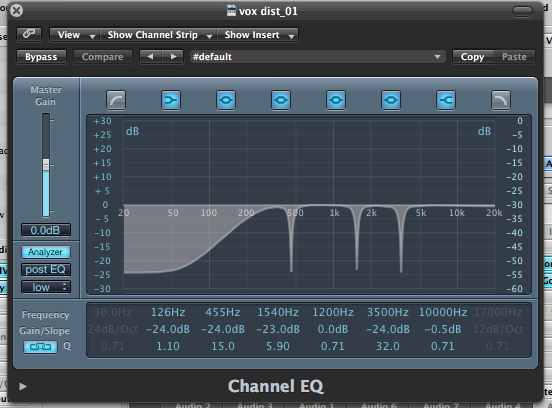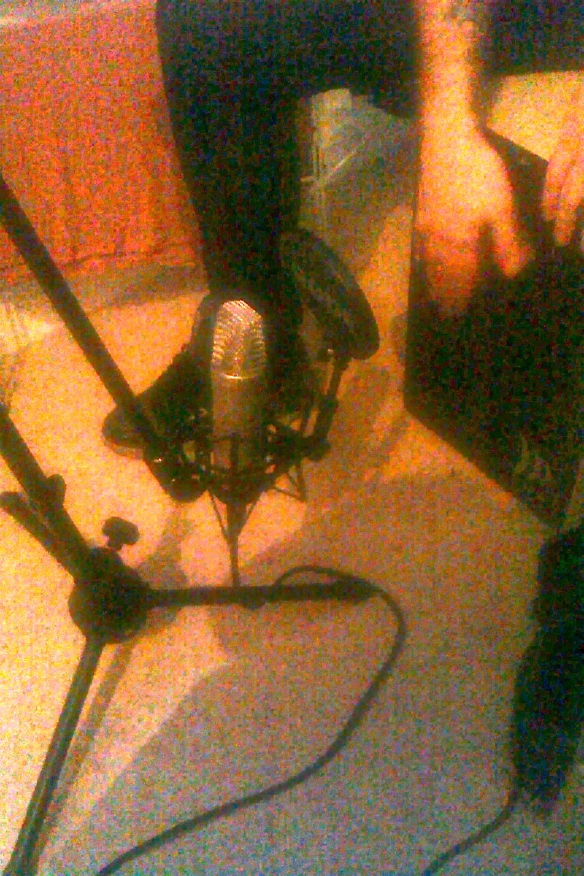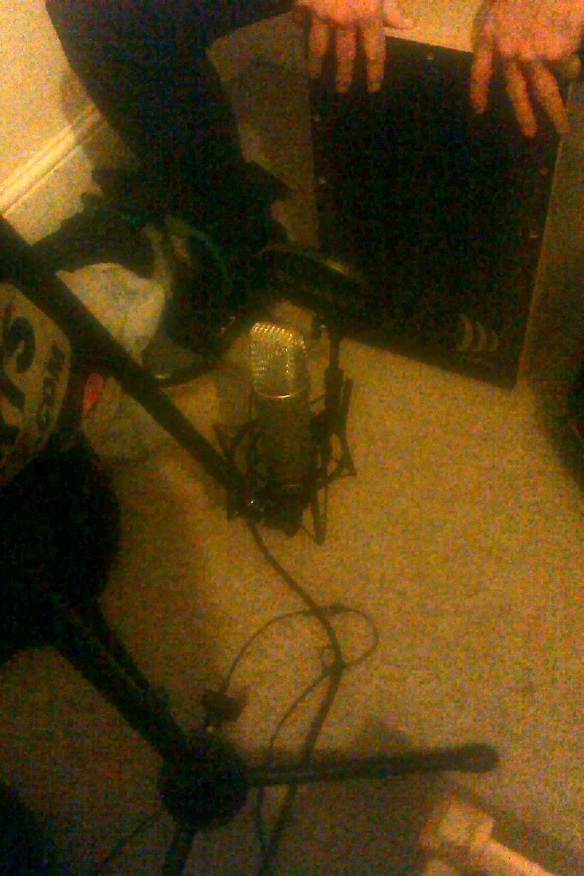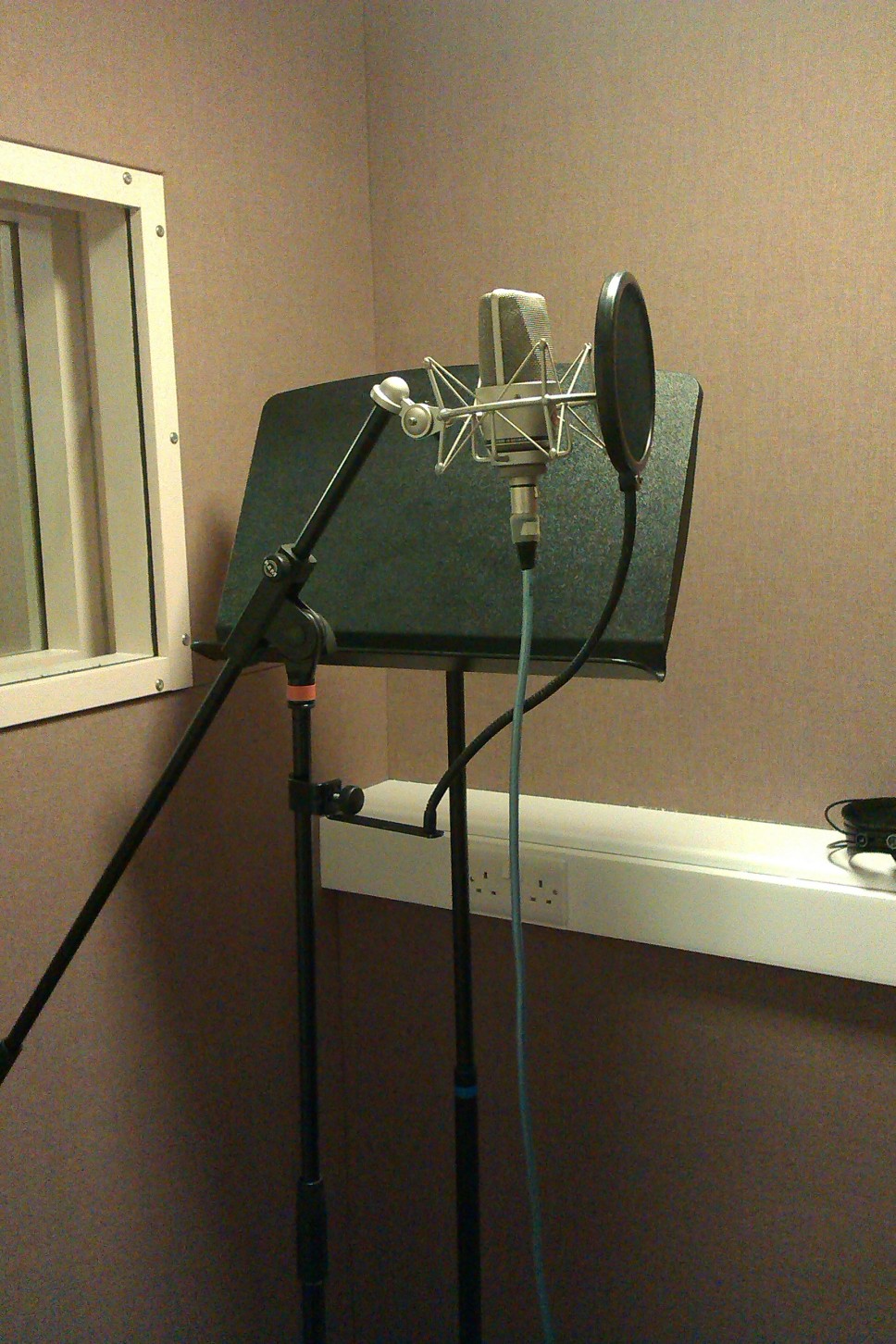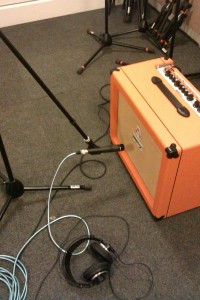In regard to mastering the track I bounced the track then opened a new file in Logic and used an adaptive limiter on the output to make it sound as close as possible to commercial tracks.
Looking at what I did with editing and the production of the track:
I inserted reverb onto the vocal tracks and guitar to make the piece sound less dry and to contrast with the warm sounds of the cajon. I also added a little delay using Space Designer on the guitar in the bridge section to give it a more atmospheric sound and make it harder to differentiate the source of the sound as it could be a synthesiser effect, something Trent Reznor would do. I added a solo guitar part and incorporated it into the end of the track to make it sound random, similarly to Frank Zappa’s production ideas. The main guitar part throughout I decided to copy and paste 4 times, I panned one far left, one far right and two tracks in between to create a fuller sound. Each guitar has a different effect, with one heavily distorted using the bitcrusher effect and another clean but with a wet reverb.
Trent Reznor influenced the idea of manually distorting the vocals by recording the clean vocals through a guitar amp on a distorted setting. Also I recorded the cajon in different rooms to achieve a similar effect to Reznor and try and recreate his idea of recording drums and putting the tracks together to create a full and different sound.
I also decided to add a keyboard/synthesiser into the track to thicken the sound of the chorus, which is the instrument Reznor will always use in a track to create his industrial feel.
I used less microphones and headed towards the minimalistic approach, looking at Gabriel Roth’s production techniques.
Subtractive EQ is a technique used significantly by Brian Eno which was used throughout editing of the vocal tracks.

